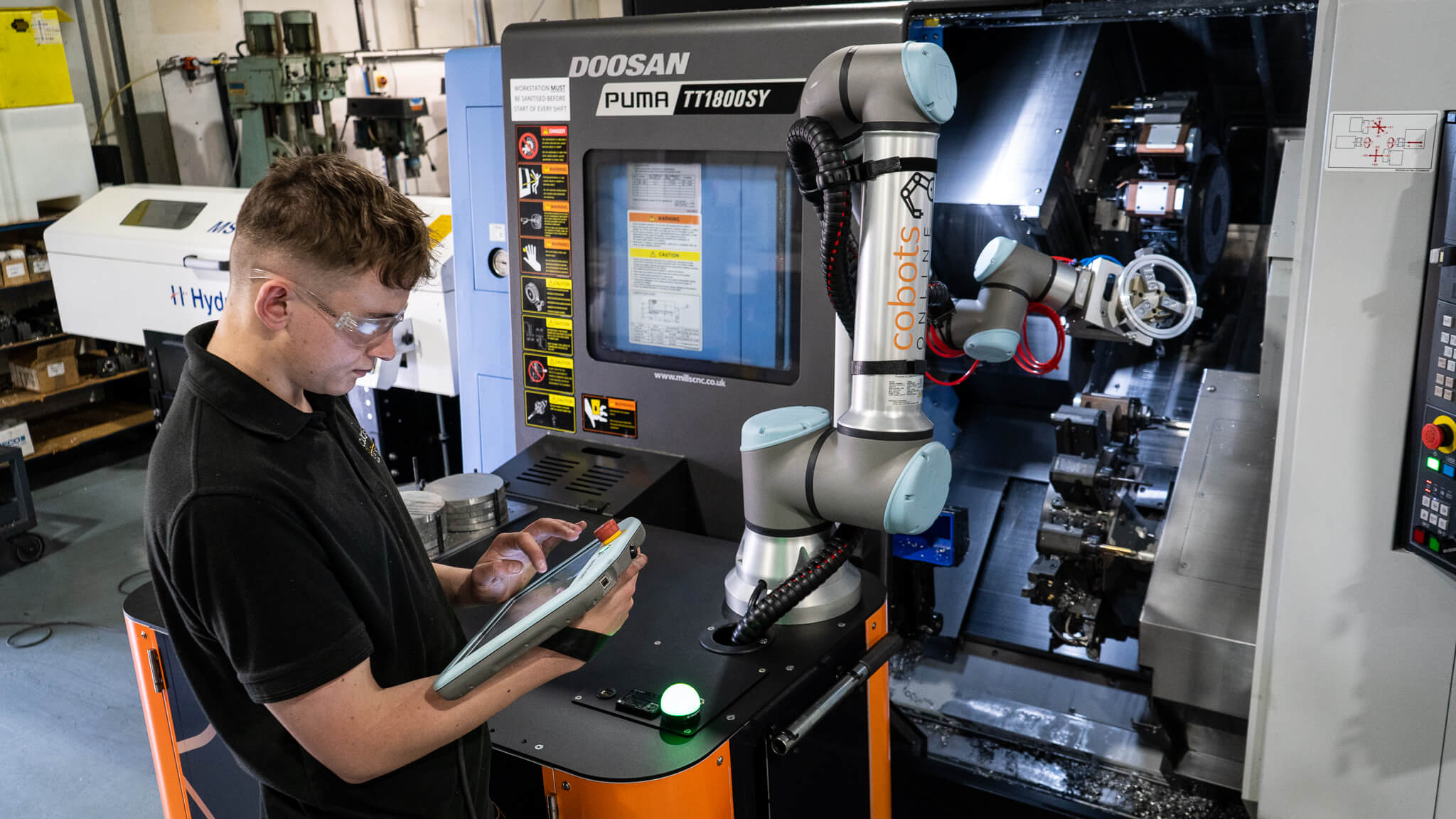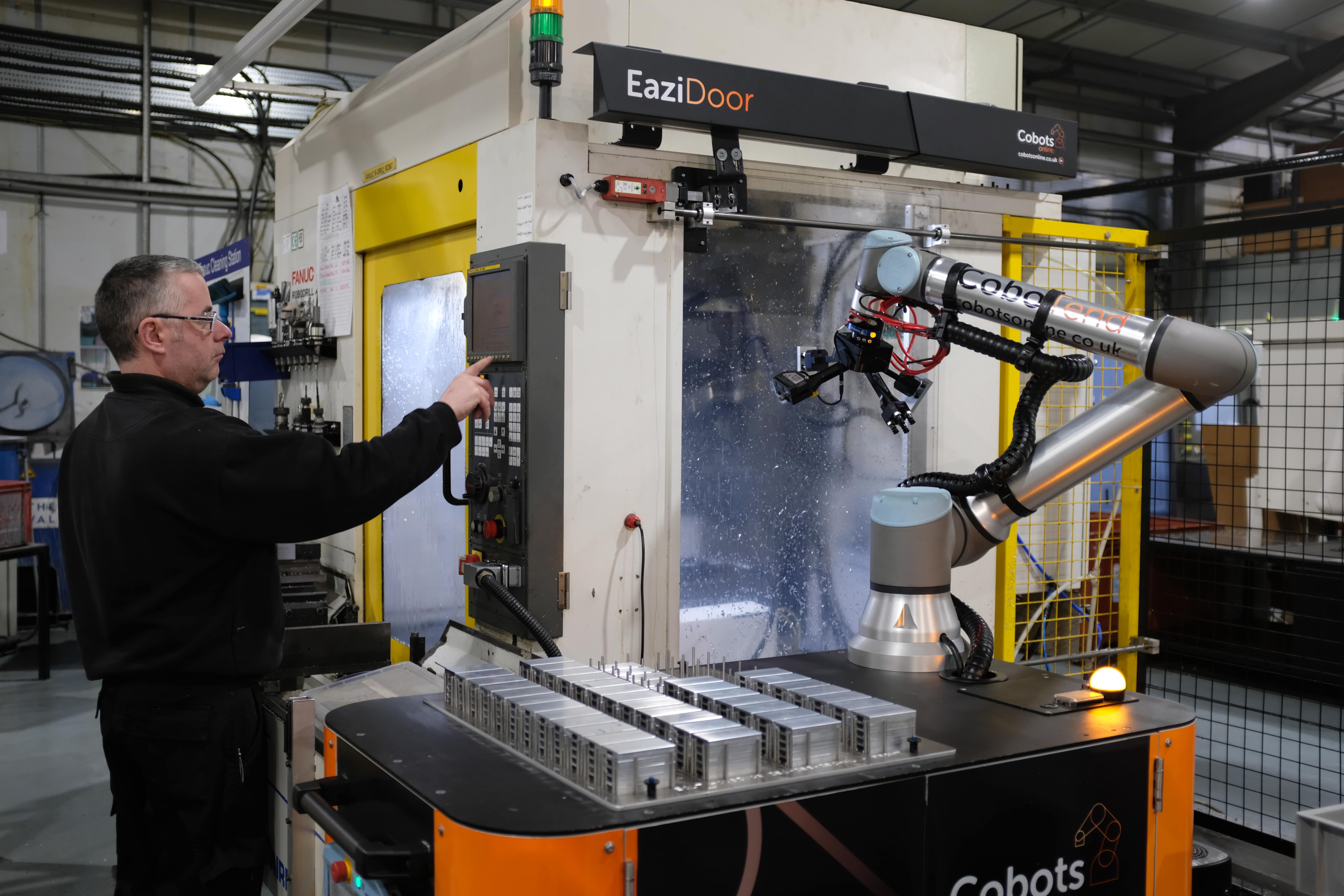Factors for a Successful Cobot Deployment
Traditionally requiring significant capital investment, specialist engineers and programmers, as well as lengthy lead times, implementing industrial robots has been unachievable and unrealistic for many businesses.
Compared to their industrial counterparts, the development of cobots has provided a viable alternative to costly, complex and time consuming robots. Their focus on human-friendly automation, safety features and cage-free deployment have contributed to the fast-growing appeal of cobot technology.
Collaborative robots have expanded the use of automation for SME manufacturers across the UK, repeatedly demonstrating their utility across a multitude of successful deployments. But what are some of the key factors for a successful cobot deployment? Let Cobots Online guide you into the world of automation.
1. Identify the process you want to automate
With floor space at a premium in most manufacturing settings, a crucial first step in any deployment is evaluating what the cobot will be doing, where it will be integrated and how it will fit into your company’s processes.

With so many possibilities, it can be tempting to automate all your processes simultaneously. Which is why it is vitally important to identify early on the tasks that can benefit the most from automation. By starting small, you and your workers will become more comfortable with the technology and have an easier time expanding automation throughout the factory floor.
Cobots are perfectly positioned to take on repetitive, mundane, or dangerous tasks that require precision, consistency, or speed. A great place to start when thinking about automation, is finding opportunities that leverage the high level of flexibility and adaptability inherent to cobots. For example, streamline machine tending tasks or packaging processes.
One of the most common downfalls that hinders the potential for an effective cobot deployment is choosing the wrong application to automate. It is also imperative to consider the compatibility and integration of the cobots with your existing equipment and software, as well as the layout of your production line and the skills of your workers. To ensure you get all this right the first time, the Cobots Online team can help you access your current processes and advise on the optimal places where automation will have significant impact and the highest ROI.
2. Choose the correct EOAT for your cobot
End of arm tooling (EOAT) is fundamental to a cobot’s success. Determining the best end effector will depend entirely on the parts the cobot will be handling. Cobots require a different EOAT for any task it undertakes, be that machine tending, palletizing, deburring, sanding, welding, painting…the list goes on.
End effectors can be driven by air, mechanical, controlled electronically, or via vacuum suction cups or other vacuum surfaces. For highly specialised applications and functions, Cobots Online has a wealth of experience designing bespoke EOATs for any work cell. If you’re ever unsure which end effector is best for your cobot and application, our knowledgeable team is able to identify the best solution for you.
3. Create a culture of collaboration
Once you’ve selected which tasks to automate, it is important to establish if cobots will replace a worker on the line. If so, what tasks will that worker perform instead? And are there any opportunities to expand production?
A common hurdle from many to overcome when integrating automation technologies is lack of employee preparedness or concerns over job security. Businesses can be so focused on the cobot aspects that they forget the crucial role employees play in successful cobot integration. If workers know what they can expect from collaborative automation, they’re less likely to see it as a threat and more likely to be comfortable working alongside cobots.

Making employees a central part of the process, from involving them in the selection and implementation, to the evaluation of cobots will increase their acceptance and engagement, leading to greater job satisfaction and improve productivity.
Empower workers to embrace this advanced technology as powerful tools they can use to streamline their work and upskill them to become cobot operators. One of cobots main advantages is how easy they are to program and operate via pendants, smartphones and tablets, even for workers with no prior experience of robotics. Their usability and flexibility eliminates many of the obstacles and resistance from workers, for a smooth integration.
4. Plan for safe operations
Unlike industrial robots which require fencing to ensure safety, when used appropriately, cobots can work in close proximity with humans without requiring barriers or cages. While cobots are inherently safe, it is still important to consider the safety strategy early in the implementation process.
Typically designed with high safety standards in mind, is it still important to understand the potential risks bringing cobots into the workplace pose to employees. Conducting an in depth risk assessment will allow manufacturers to understand their unique risk factors.
When integrated correctly, cobots can improve employee safety, taking on high-risk tasks to allow workers to focus on higher-value, and most importantly, safer roles. With built-in safety features, like force-sensors, cobots are improving healthy and safety standards for manufacturers across the world.

5. Refine and optimise your cobot
Once you have successfully implemented your cobot into your production line, it is important to analyse and review their performance to ensure maximum ROI. With their high usability, employees can make basic adjustments quickly and easily to keep productivity high with minimal downtime.
With your cobot up and running, it is also an opportune time to identify areas you may want to scale and expand their use. Explore new opportunities and innovations that cobots enable, such as new products, services or markets to enhance your competitiveness, sustainability, output, and customer satisfaction.
Automation within reach
Mistakes can be costly, which is why the support of an experienced cobot integrator can make all the difference. As a Certified System Integrator (CSI) for Universal Robots and CNC manufacturers ourselves, we understand the unique challenges businesses face.
Our specialist team can help you deploy and implement your collaborative application, ensuring your cobots are optimised and performing efficiently.
Set yourself up for success and contact Cobots Online today.
